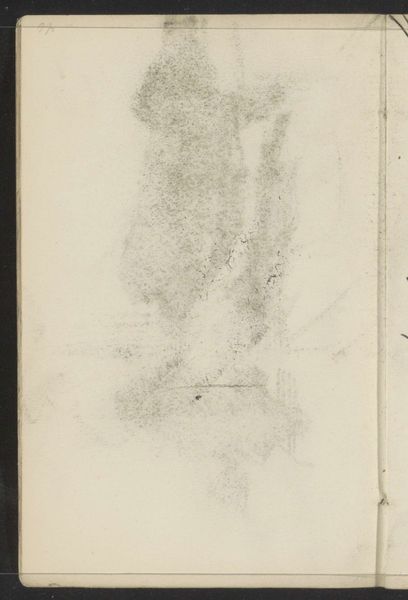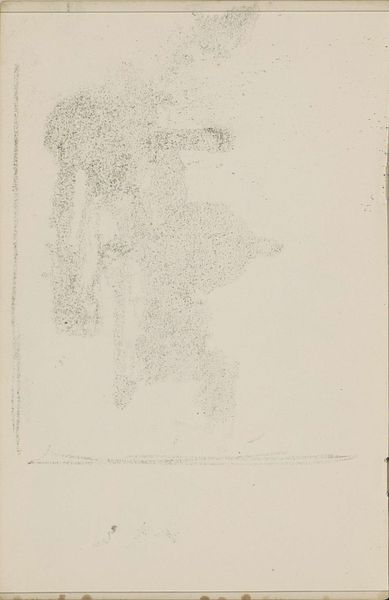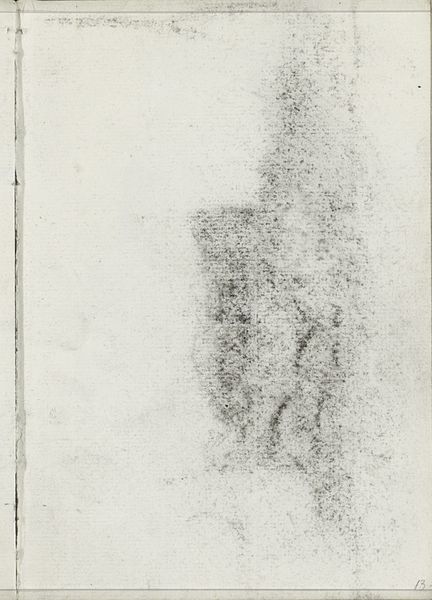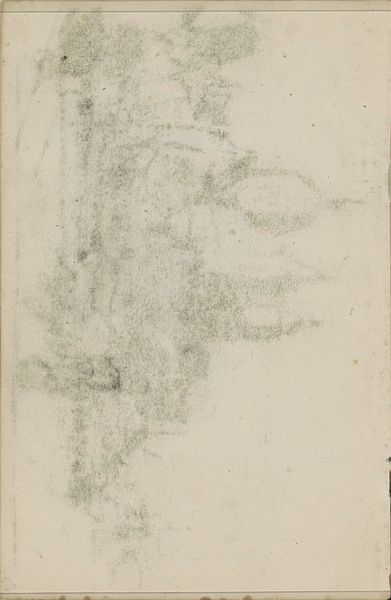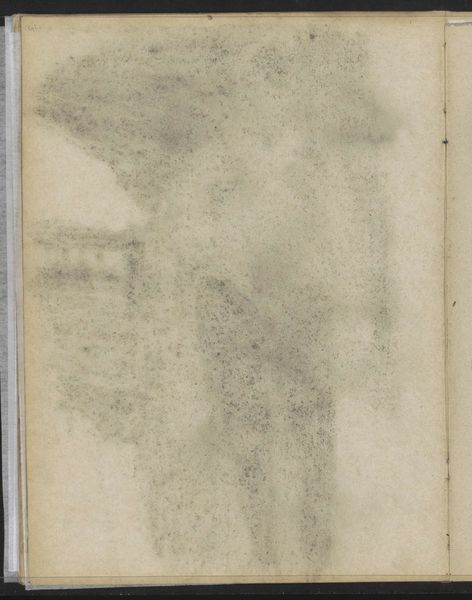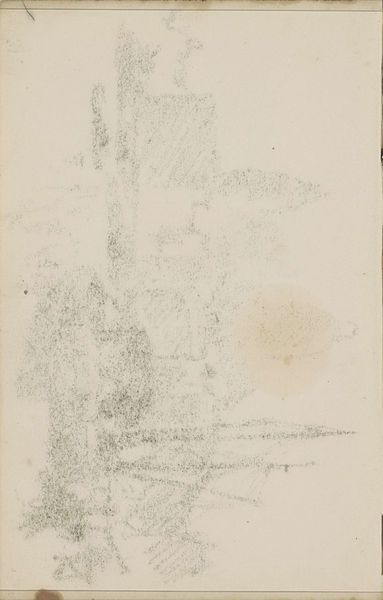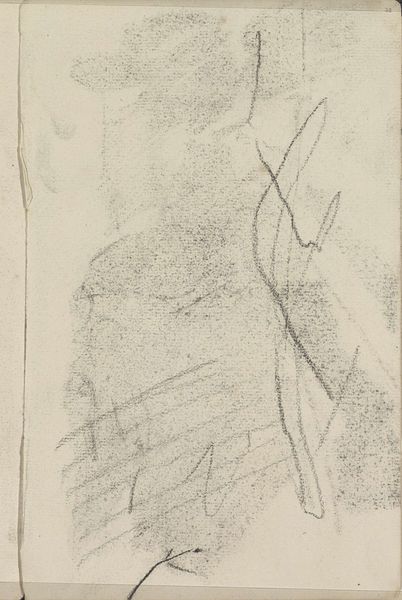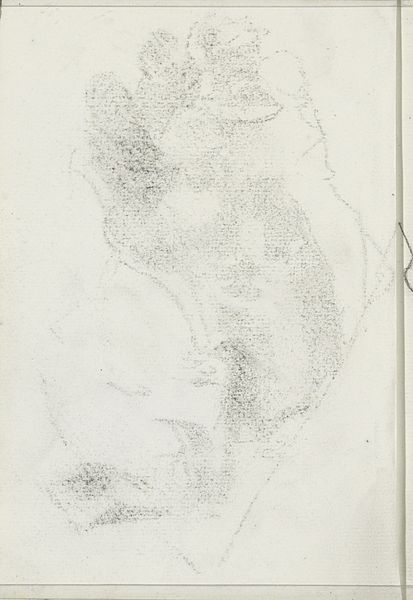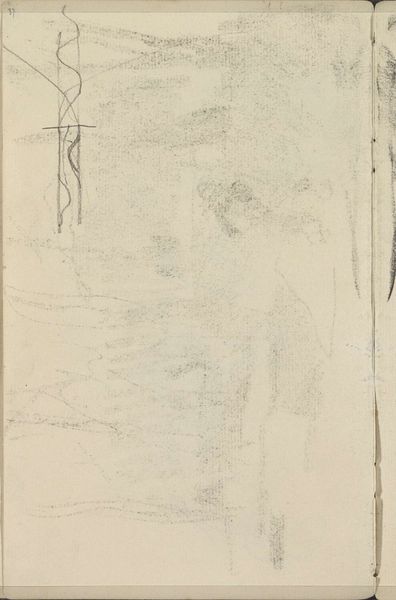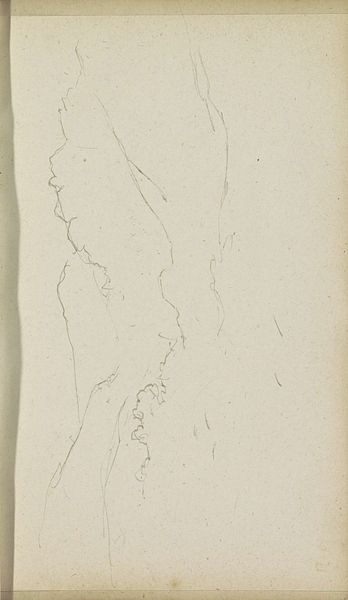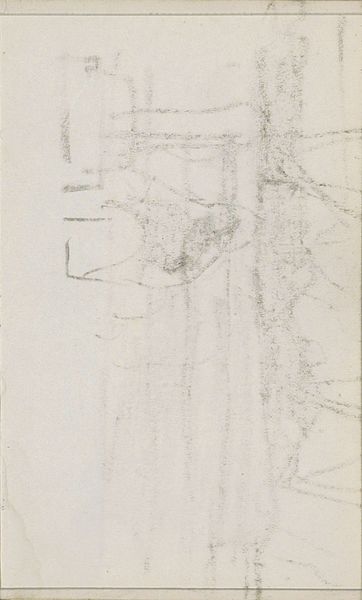
Copyright: Rijks Museum: Open Domain
Editor: We're looking at a piece called "Abklatsch van de krijttekening op blad 6 recto" by Isaac Israels, made sometime between 1887 and 1934. It's a pencil drawing on paper. It strikes me as incredibly fragile, ephemeral, almost like a memory fading away. What stands out to you when you look at this sketch? Curator: Ah, yes, "fragile" is a wonderful word for it. It’s a wisp of an image, isn't it? For me, it’s like eavesdropping on the artist's thought process. Israels was a master of capturing fleeting moments, the hustle and bustle of city life. This feels almost like a secret glimpse into his practice – less about finished perfection and more about raw observation. Editor: I can see that, it's a peek behind the curtain. Do you think that rawness enhances the piece? Curator: Absolutely. It’s almost voyeuristic. Think about how photography was changing art at this time – freeing painting and drawing to explore subjectivity, impression, feeling. It feels deeply modern, doesn’t it? You can practically feel Israels wrestling with form, light… what do you feel when you think about this time period for artists like Israels? Editor: I think it feels less constrained, less beholden to rules. Maybe that’s why the fragility of the piece feels so fitting. Curator: Precisely! A rejection of the rigid. This little sketch is like a sigh of liberation. A space for quiet contemplation. Editor: I’ll definitely look at other Impressionist sketches differently now. Seeing that almost "anything goes" attitude in something so simple has totally changed my perception. Curator: Wonderful! That’s the beauty of these intimate sketches, they whisper secrets about creativity and the artistic journey if you pause to listen.
Comments
No comments
Be the first to comment and join the conversation on the ultimate creative platform.
